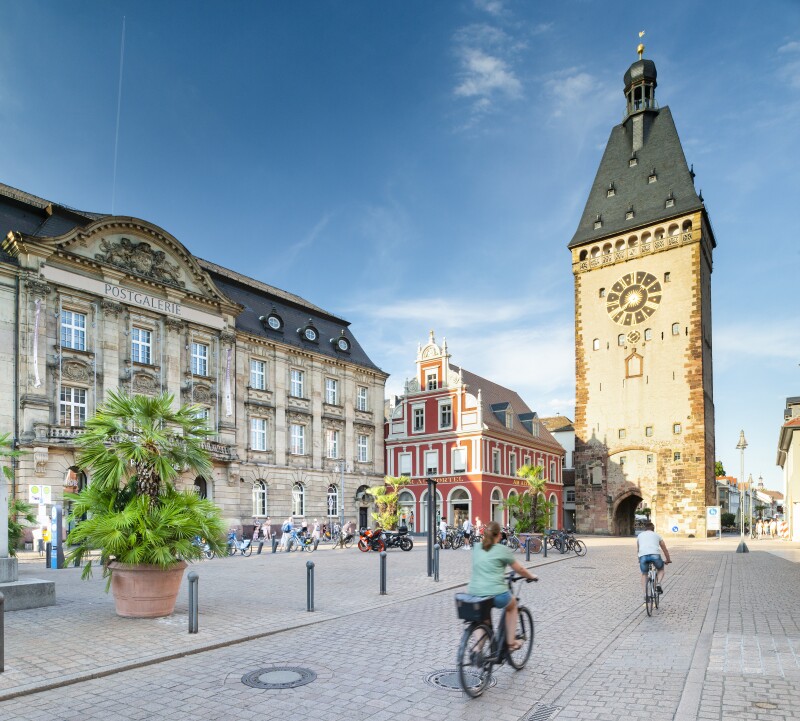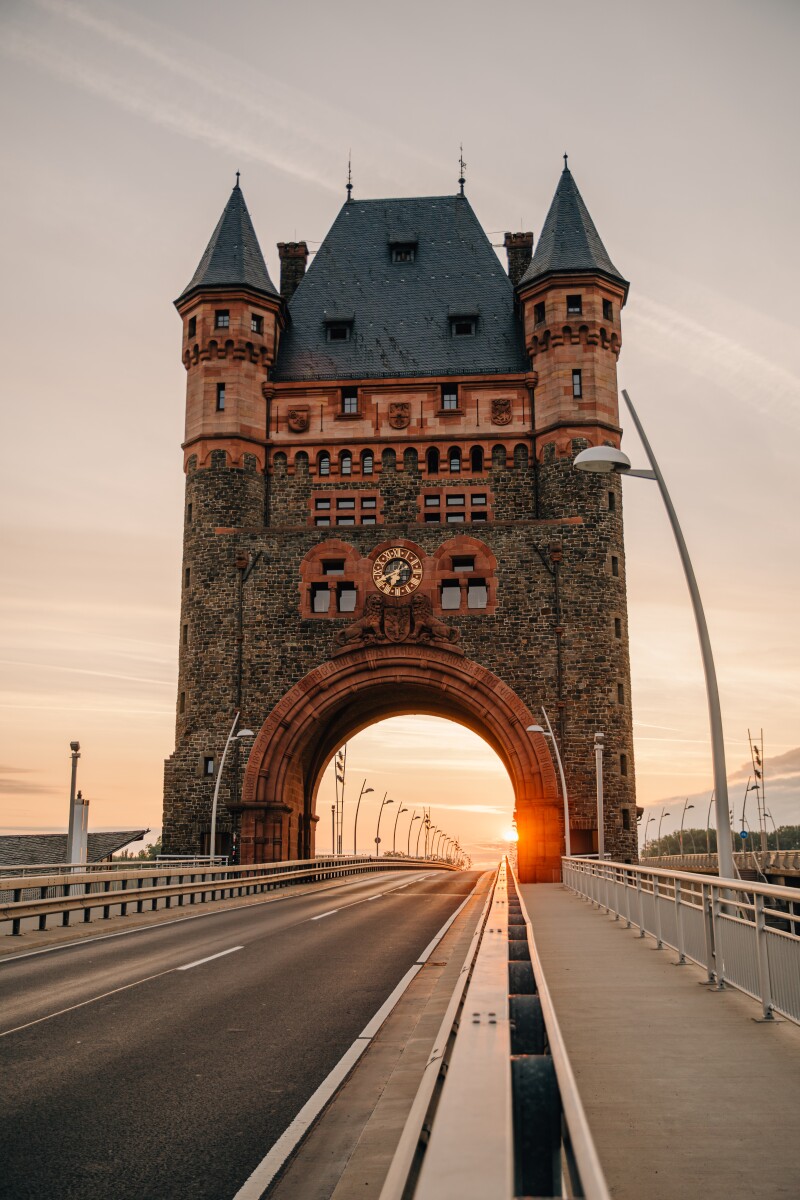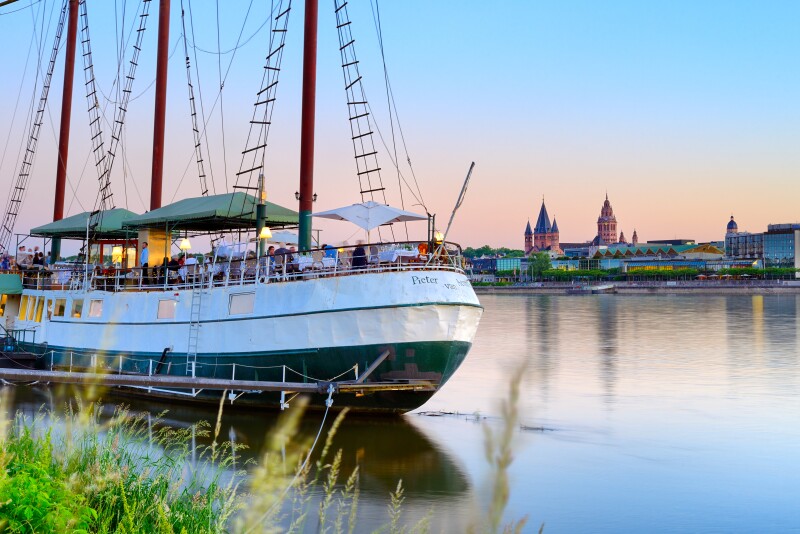The Jewish communities of Speyer, Worms, and Mainz provide invaluable insights into an important slice of history. They’re also full of fascinating things to do, see, and taste right now. Transcending religious identity, this region introduces travelers to a side of Germany that is as fresh and distinctive as it is rooted in such vital tradition.
Jews have called Germany their home for more than 1,700 years and together, they represent a piece of the diaspora unique to the rest of the world’s Jewry and an important aspect of this country’s history. As waves of persecution engulfed Europe during the Middle Ages, the particularly strong communities of Speyer, Worms, and Mainz joined up in solidarity to sustain Jewish culture as a bulwark from such oppression.
Now, hundreds of years later in this charming part of the Upper Rhine Valley, Jewish life is as strong as ever. Declared a UNESCO World Heritage Site in 2021, the “ShUM” Sites—so-named for the Hebrew initials of those three cities—represent German Jewry in myriad ways, from museums and community centers to sacred baths and centuries-old cemeteries.
Sacred baths and excellent wine in Speyer

Approaching the Old City Gate in downtown Speyer
©GNTB/Francesco Carovillano
Speyer is one of the oldest cities in Germany. It was founded originally by the ancient Romans as a military camp in 10 B.C.E. and was established as an autonomous imperial city by the late 13th century. Before it gained independence from the Holy Roman Empire, however, it had been settled as one of the most important Jewish communities in Medieval Europe, leaving behind a legacy of 11th-century structures that can still be visited today.
For a comprehensive glimpse at this history, the SchPIRA Museum is unlike any other collection on earth in its power to reclaim what was lost over centuries of tragic oppression and senseless slaughter. Spread across the site of the town’s original synagogue and mikveh (ritual baths) while displaying remnants of the decommissioned Jewish cemetery, the museum helps piece together what life was like in Speyer’s Jewish community 1000 years ago through priceless treasures and everyday objects alike.
While in Speyer, the Wine Museum is a great opportunity to learn about the history of wine production in the Upper Rhine, including the importance of wine in Jewish rituals, while a walking wine tour is a great way to survey the important pinot noirs and rieslings first-hand. Finally, one can’t visit Speyer without admiring the town’s cathedral, itself listed as a UNESCO World Heritage Site for its noteworthy Romanesque architecture and as the final resting place of eight Holy Roman Emperors and kings.
Worms and its cemeteries, cultural centers, and sites of the Reformation

The Nibelung Tower offers visitors an awe-inspiring welcome to Worms
©GNTB/Mathias Koch
Thirty minutes north of Speyer on a railway that follows the course of the Rhine River, Worms is perhaps most famous for hosting Martin Luther in 1521 during the Diet of Worms, a conference that changed Christianity forever. But it also boasts a Jewish community that dates to the year 1,000, if not to ancient Roman times.
After several pogroms over the centuries which nearly wiped out the whole of the town’s Jewish population, the city stands today as a symbol of resilience. An important site for Jewish pilgrims, secular visitors can pay their respects at Holy Sands, the oldest surviving Jewish cemetery in Europe, where many important figures are interred among the 2,000 graves, including the scholar Salomon ben Isaac and Rabbi Meir of Rothenburg.
In the Judenhof (Jewish district), the art nouveau-style Jewish hall of mourning is worth a visit, not to mention the synagogue and mikveh. Rashi House, a dancehall-turned-synagogue-turned-museum and cultural center, features permanent and rolling art exhibitions to help tell the story of Jewish life in the Rhineland, past and present. While in town, oenophiles can also partake in the Worms’ Wine Experience, which includes tastings in its historic urban wineries, plus seasonal wine fairs and markets among the Vintners’ Fountain which commemorates a proud tradition of winemaking excellence dating back to ancient times.
More history in Mainz

Mainz is home to the oldest Jewish cemetery in Europe
©Landeshauptstadt Mainz
The northernmost of the ShUM cities along the Rhine, Mainz also features the oldest Jewish community of the three, dating at least to the middle of the 10th century. After centuries of violence and misfortune, few signs of that community remain today, among them a small but precious burial ground dating to around 1012.
Nevertheless, the state capital has reemerged as a symbol of contemporary Jewish culture in Germany, centered on a bold “new” synagogue built by architect Manuel Herz in 2010 around residual structural elements from the “old” synagogue, itself destroyed in 1938. It was inspired by the teachings of Gershom ben Jehuda, one of the most important Talmudic scholars of the 11th century. The building’s strikingly angular, symbolic design is a draw for those who love contemporary architecture. Amid its mikveh, kosher kitchen, and community center, the synagogue plays an important role in the local Jewish community and offers historical exhibitions, concerts, and services to anyone interested in learning more.
While in Mainz, be sure to visit the old city center with its medieval cathedral, timber-framed shops, and many historic wine cellars and taverns, where one can enjoy a traditional weck, worscht un woi (bread roll and sausage with a glass of local wine) or perhaps a refreshing schoppe (wine mixed with sparkling water).

One of the spacious riverview suites at the Hilton Mainz
Courtesy of Hilton
As far as home bases go for touring the ShUM, few places are more convenient and cozy than the modern, eclectic Hilton Mainz, just one block from the historic center of Mainz and located directly on the Rhine River. Guests can take in excellent views from the riverside terrace of Weinstube, its onsite restaurant offering regional cuisine paired with a sampling of that renowned local wine. And, with the train station 10 minutes away, Speyer, Worms, and the many world-class wineries of the Upper Rhine are all within easy reach.
Following the Rhine

Travelers admire the Mainz skyline from a riverboat moored on the Rhine
©GNTB/Francesco Carovillano
Those interested in a deeper dive into this region’s important role in the development of Judeo-Christian history can look to this Faith Route for a different look at German history. Featuring seven UNESCO World Heritage Sites, this itinerary covers 10 culture-rich days in total, running from Jewish Mainz eastward to the birthplace of Martin Luther and several historical sites that helped shape the Christian reformist’s extraordinary life.











